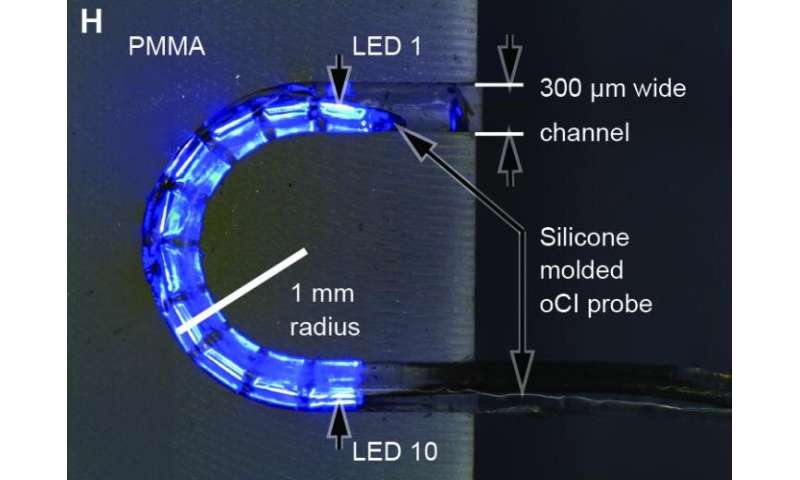
A team of researchers affiliated with multiple institutions in Germany has developed a cochlear implant that converts sound waves to light signals instead of electrical signals. In their paper published in the journal Science Translational Medicine, the group describes their new hearing aid and how well it worked in test rats.
Cochlear implants work by converting sound waves into electrical signals that are sent to nerve cells in the ear. The idea is to bypass damaged hair cells inside the cochlea to restore hearing. But because the fluid in the ear also conducts electricity, the electrical signals that are generated can cross, leading to a loss of resolution. The result is difficulty hearing in some situations, such as crowded rooms, or when listening to music with a lot of instruments. In this new effort, the researchers sought to replace the electrical signals in such devices with light signals, which would not be muddied by the fluid in the ear, and thereby improve hearing.
In all types of cochlear devices, sound entering the ear is directed to a computer chip that processes the sound it detects. After processing, the chip directs another device to create signals that are sent to the neurons. With the new device, the researchers developed a device that would generate light using LED chips and send it through fiber cable directly to the nerve cells.
In order for such a system to work, the nerve cells inside the ear would have to be modified in some way to allow them to respond to light instead of electricity. For testing purposes, the researchers genetically modified lab rats to grow nerve cells in their ears that would respond to light. In their device, they used an implant with 10 LED chips. They also trained the rats to respond to different sounds before disabling their hair cells and implanting the cochlear devices. The implants worked as hoped, as the rats were able to respond in similar ways to the same generated sounds.
The researchers suggest that in people, such a device would use 64 LED or other light source channels. They also plan to conduct more research with the device and hope to start clinical trials by 2025.
Bob Yirka , Medical Xpress

